'Disturbing'?
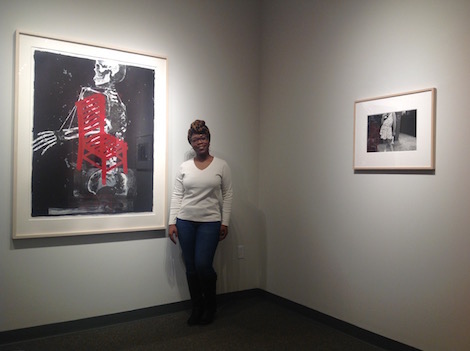
La'nae Charles, Student Curator for this exhibition with, from left to right, Robert Cumming, Red Chair, 1986; Mark Cohen, Girl Holding Popsicle, 1972.
Dec 03, 2016 - Jan 29, 2017
The purpose of this installation is to extract emotion in an attempt to understand how different images affect different people. Each piece that has been selected can be considered "disturbing" in one way or another. Ultimately, the rationale for the exhibition is to create an atmosphere where the viewer can self-reflect as they react to each piece in order to figure out what may or may not make them feel uncomfortable, and how this reaction may relate to their experiences in the real world.
The goal of this of this exhibition is to encourage viewers to self reflect based on their initial reactions to the works presented. While Each artists' intention may not have been to upset the viewer, each piece does include "disturbing" features. Some of these features are more obvious than others, for example, Francesco Clemente's Telemone #1 essentially begs the viewer to explore the anatomy of the subject. Robert Cumming's Red Chair places the viewer in a space of perplexity, where as in Robert Jessup's drawing Watchful Father, the viewers initial reaction to visual features may be affected by the title of the work. In such cases we find that words and titles play an important role in our overall experience. With the animated characters in Steven Campbell's Young Man Frozen by a Waterfall, the title is significant in guiding viewers through the narratives of his paintings. Some artists use a very subtle approach in communicating these disturbing factors. Artists such as Mark Cohen often times will take photos of unsuspecting subjects using his "shoot from the hip" style photography or David Hockey who explores different aspects of life through his lens produces intrusive but elegant photos. Other artist force viewers to study their pieces on a deeper level, because these "disturbing" factors aren't as obvious. David Salle's piece presents sketch-like figures using his overlay technique, which takes the viewer on a journey in deciphering each individual figure. Jane Hammond's works has similar effects. Her photo-montages and collage like arrangements are pleasing to the eye but present a puzzle that includes objects that don't always logically belong.
This a student curated and installed exhibition by La’nae Charles, Arts Administration. [This descriptive text is also entirely in La’nae’s hand]
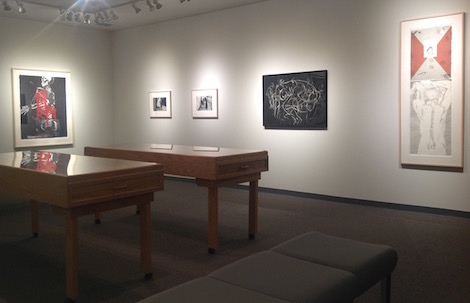
From left to right: Robert Cumming, Red Chair, 1986; Mark Cohen, Girl Holding Popsicle, 1972 and Girls Hiding from Camera, 1972; David Salle, Until Photographs Could be Taken from Earth Satellites, 1983; Francesco Clemente, Telemone #1, 1981.

From left to right: Mark Cohen, Girl Holding Popsicle, 1972 and Girls Hiding from Camera, 1972; David Salle, Until Photographs Could be Taken from Earth Satellites, 1983.
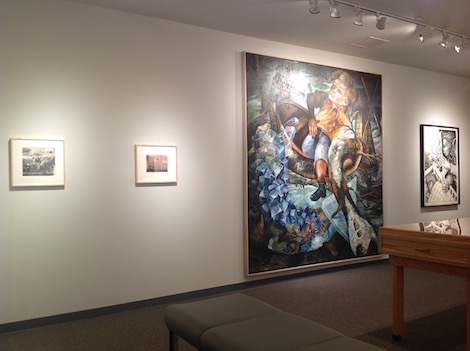
From left to right: Jane Hammond, The Touch-Up, 2012; David Hockney, The Pines of Fire Island, 1975; Steven Campbell, Young Man Frozen by a Waterfall, 1985; Robert Jessup, Watchful Father, 1987.
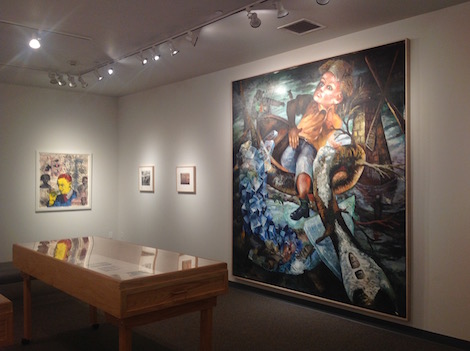
From left to right: Jane Hammond, Tuner, 1993 and The Touch-Up, 2012; David Hockney, The Pines of Fire Island, 1975; Steven Campbell, Young Man Frozen by a Waterfall, 1985.
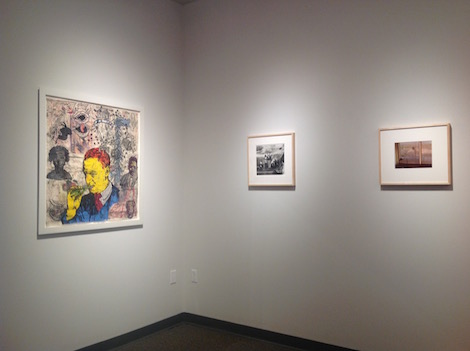
From left to right: Jane Hammond, Tuner, 1993 and The Touch-Up, 2012; David Hockney, The Pines of Fire Island, 1975.
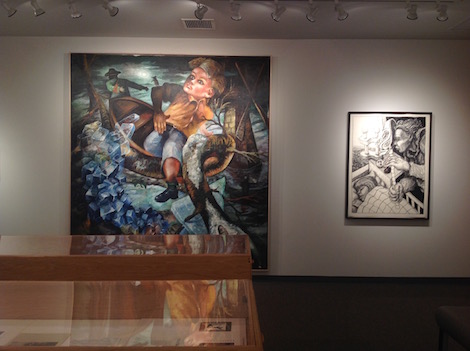
From left to right: Steven Campbell, Young Man Frozen by a Waterfall, 1985; Robert Jessup, Watchful Father, 1987.
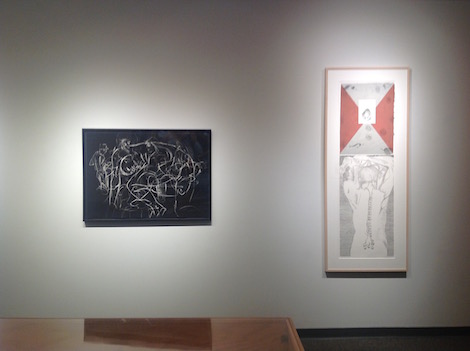
From left to right: David Salle, Until Photographs Could be Taken from Earth Satellites, 1983; Francesco Clemente, Telemone #1, 1981.
All Current Exhibitions | All Future Exhibitions | Exhibition Archive


